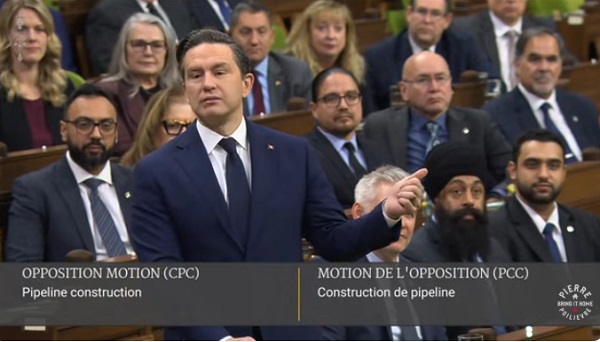National
Jordan Peterson calls for public apology from Trudeau over accusations about ties to Russia

From LifeSiteNews
The prominent psychologist is also considering legal action against Canada’s prime minister.
Popular psychologist Dr. Jordan Peterson demanded an apology from Justin Trudeau after the Canadian prime minister accused him last week of being funded by Russian state media.
In a X post on Friday, Peterson wrote, “Dear @JustinTrudeau Here are the options: 1. I am a Russian agent and traitor 2. You are a liar. 3. You are incompetent.”
Peterson observed that “before we assume the first is true some shred of evidence, no matter how flimsy, should be adduced.”
“If none is forthcoming, then one or both of the next two possibilities must be true,” he wrote.
Peterson then asked for an apology from Canada’s leader.
“Furthermore, a maximally public apology (that means press conference) is due. Your move Sir Take note @TuckerCarlson.”
In another X post on the same day, Peterson made fun of Trudeau’s claims by posting a fake image of himself wearing a Russian hat, saying the leader should use the (fake) photos to implicate him.
“Here Use this @JustinTrudeau It’s more convincing than Whatever You have For sure,” he wrote.
As reported by LifeSiteNews last week, Trudeau claimed U.S. media personality Tucker Carlson and Peterson are being funded by the state media outlet Russia Today. He also blamed Russia for “amplifying the chaos” surrounding the 2022 Freedom Convoy protests.
Trudeau made the claim last Wednesday under oath during testimony at the Foreign Interference Commission, after he was asked about Russia’s alleged role in the Freedom Convoy.
Peterson, as reported by LifeSiteNews, confirmed he is considering legal action against the prime minister.
Meanwhile, Trudeau has praised China for its “basic dictatorship” and has labeled the authoritarian nation as his favorite country other than his own.
Peterson for his part has been critical of Trudeau and his Liberal government for years.
Business
Conservative MP warns Liberals’ national AI plan could increase gov’t surveillance

From LifeSiteNews
Conservative MP Leslyn Lewis raised concerns about the Liberals’ major investment in AI, which could lead to digital ids and loss of freedoms.
Conservative MP Leslyn Lewis is sounding the alarm over the Liberals’ nearly billion-dollar AI infrastructure investment, which could lead to digital IDs
In a December 2 post on X, Lewis raised concerns over the Liberals’ 2025 budget, which funds a $925.6 million “Sovereign Canadian Cloud” and national AI compute infrastructure at the same time as the Liberals are pushing digital identification on Canadians.
“Who audits the algorithms behind government’s new digital systems?” Lewis challenged. “What protections exist for Canadians in this new infrastructure? Who builds it? Who controls it? Who owns the data?”
“Good technology isn’t the issue, our freedoms, surveillance and good accountable governance in a digital era are the real issues,” she warned.
“Digital infrastructure is power, and it must never be implemented in secrecy or without parliamentary scrutiny,” Lewis declared.
Despite spending nearly one billion taxpayer dollars on the project, Prime Minister Mark Carney provides surprisingly few details on how the infrastructure will work and what its purpose will be.
“Budget 2025 proposes to provide $925.6 million over five years, starting in 2025-26, to support a large-scale sovereign public AI infrastructure that will boost AI compute availability and support access to sovereign AI compute capacity for public and private research,” the budget read.
“The investment will ensure Canada has the capacity needed to be globally competitive in a secure and sovereign environment,” it continued.
Alarmingly, the funding comes at the same time as Liberals are moving forward with digital identification systems, despite warnings that they will infringe on Canadians freedoms.
In November, as reported by LifeSiteNews, Liberals moved ahead with digital identification for anyone seeking federal benefits, including seniors on Old Age Security.
Additionally, the Canadian government hired outside consultants tasked with looking into whether or not officials should proceed with creating a digital ID system for all citizens and residents.
Per a May 20 Digital Credentials Issue memo, and as noted by Blacklock’s Reporter, the “adoption” of such a digital ID system may be difficult.
Canada’s Privy Council research from 2023 noted that there is strong public resistance to the use of digital IDs to access government services.
Nonetheless, Conservative leader Pierre Poilievre sounded the alarm by promising to introduce a bill that would “expressly prohibit” digital IDs in Canada.
Critics have warned that the purpose of such IDs is actually to centralize control over citizens. This opinion seems to be mirrored by the general public, with a Bank of Canada survey finding that Canadians are wary of a government-backed digital currency, concluding that a “significant number” of citizens would resist the implementation of such a system.
Digital IDs and similar systems have long been pushed by globalist groups like the World Economic Forum, an organization with which Carney has extensive ties, under the guise of ease of access and security.
Business
Looks like the Liberals don’t support their own Pipeline MOU

From Pierre Poilievre
-

 COVID-192 days ago
COVID-192 days agoUniversity of Colorado will pay $10 million to staff, students for trying to force them to take COVID shots
-

 Bruce Dowbiggin2 days ago
Bruce Dowbiggin2 days agoIntegration Or Indignation: Whose Strategy Worked Best Against Trump?
-

 Focal Points2 days ago
Focal Points2 days agoCommon Vaccines Linked to 38-50% Increased Risk of Dementia and Alzheimer’s
-

 espionage2 days ago
espionage2 days agoWestern Campuses Help Build China’s Digital Dragnet With U.S. Tax Funds, Study Warns
-

 Opinion2 days ago
Opinion2 days agoThe day the ‘King of rock ‘n’ roll saved the Arizona memorial
-

 Bruce Dowbiggin2 days ago
Bruce Dowbiggin2 days agoWayne Gretzky’s Terrible, Awful Week.. And Soccer/ Football.
-

 Agriculture2 days ago
Agriculture2 days agoCanada’s air quality among the best in the world
-

 Health1 day ago
Health1 day agoCDC Vaccine Panel Votes to End Universal Hep B Vaccine for Newborns






